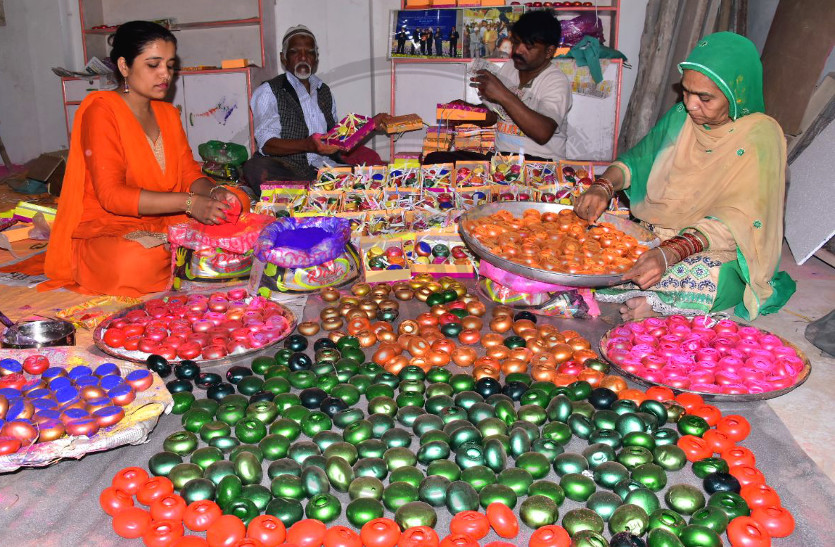Jaipur’s traditional celebrations with ‘Gulaal Gota’

- 23 Mar 2024
Why is it in the News?
In Jaipur, Rajasthan, a centuries-old tradition called "Gulaal Gota" will be observed during Holi, involving the throwing of colors through a unique medium, dating back around 400 years.
What is a Gulaal Gota?
- A Gulaal Gota is a small ball made of lac, filled with dry gulaal.
- Weighing around 20 grams when filled with gulaal, these balls are thrown at people on Holi, getting smashed to bits on impact.
- Local artisans say that making Gulaal Gotas involves first boiling the lac in water to make it flexible.
- Lac is a resinous substance that is secreted by certain insects. It is also used to make bangles.
- After shaping the lac, colour is added to it. At first red, yellow, and green are added as other colours can be obtained through their combinations.
- After the processing is done, artisans heat the lac.
- It is then blown into a spherical shape with the help of a blower called “phunkni”.
- Then, gulaal is filled in the balls before they are sealed with lac.
Where does the raw material for Gulaal Gota come from?
- Lac is brought from Chhattisgarh and Jharkhand.
- The female scale insect is one of the sources of lac.
- To produce 1 kg of lac resin, around 300,000 insects are killed.
- The lac insects also yield resin, lac dye, and lac wax.
How did Gulaal Gotas become a tradition in Jaipur?
- Gulaal Gotas are made by Muslim lac makers, called Manihaars, only in Jaipur.
- Manihaars’ ancestors were shepherds and horse traders who arrived from Afghanistan.
- They settled in Bagru, a town located close to Jaipur, and learned lac-making from Hindu lac makers or Lakhere.
- The city of Jaipur was established in 1727. Its founder Sawai Jai Singh II, an admirer of art, dedicated a lane at the Tripoliya Bazaar to the Manihaar community.
- This is where lac bangles, jewelry, and Gulaal Gota are mostly sold, to date.
What is the economics of this tradition?
- One box of six Gulaal Gota balls is sold for Rs 150, which is much costlier than water balloons.
- Usually, the whole family of artisans is engaged in this work, including women.
- For Manihaars, lac bangles are the main source of sustenance as making Gulaal Gota is a seasonal work.
- Artisans say that the bangles are eco-friendly as they are made without any chemicals.
Why the demand is falling?
- Jaipur has of late become a hub of many factories where cheap, chemical-based bangles are made with minimum lac.
- Original lac bangles are costlier than the manufactured ones. Hence, the demand for lac-only bangles has fallen.
- Many of the community’s younger members are also more interested in taking up blue-collar jobs instead of artisan work.
Government Support and Artisan Empowerment:
- The Indian government has issued artisan cards to Lac Bangle and Gulaal Gota craftsmen, enabling them to access benefits under various government schemes.
- Many artisans have ventured abroad to exhibit their craft, such as Awaz Mohammad, who was invited to showcase his work at the G20 summit in New Delhi last year.
- In efforts to preserve tradition, some Gulaal Gota artisans are advocating for a Geographical Indication (GI) tag, which can enhance product visibility and underscore its unique regional identity.
